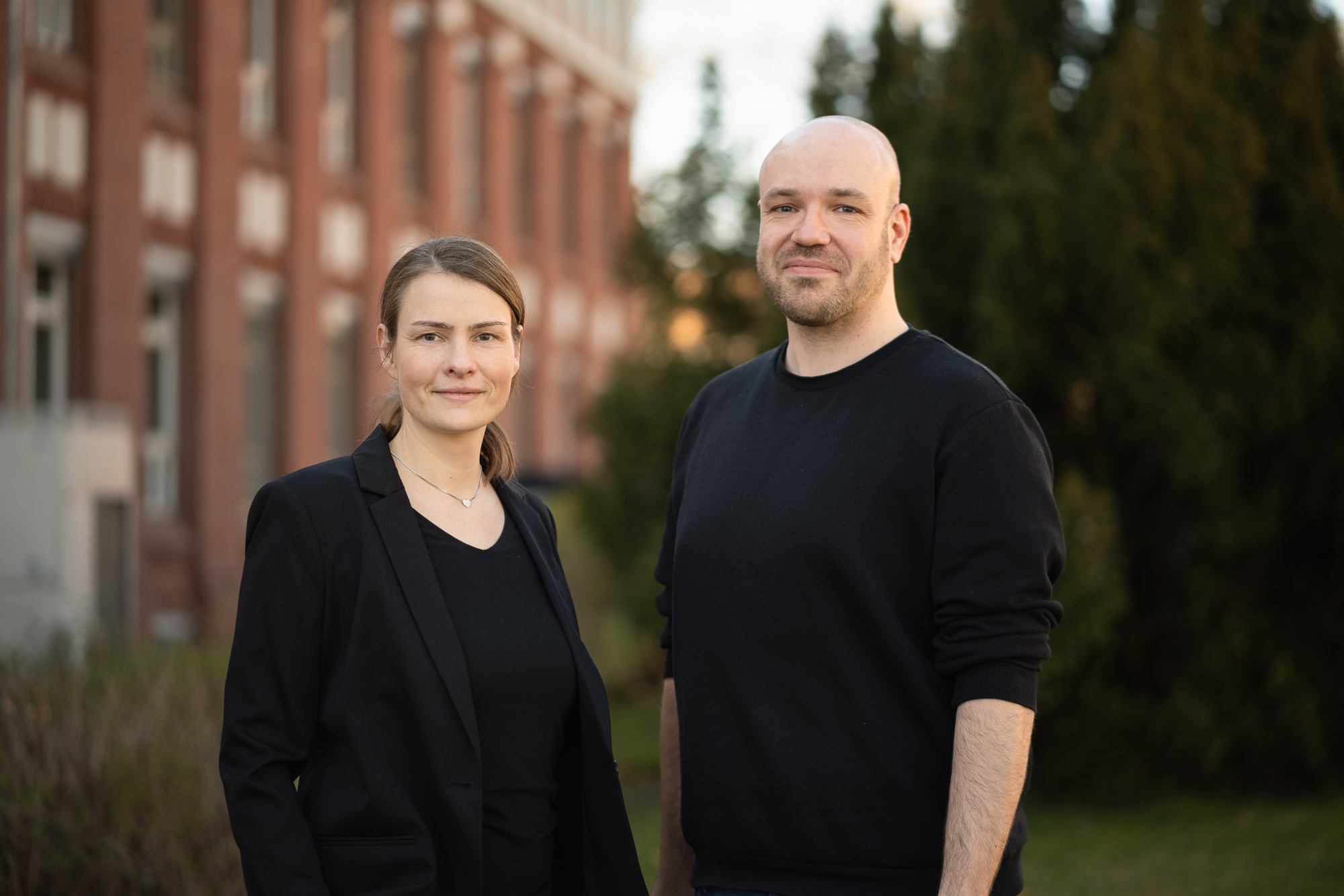
Daniela Schob and Philipp Maasch from the junior research group
Source: Philipp Maasch
Additive manufacturing enables cost-effective production of small batches of components with complex geometries. In particular, Laser Powder Bed Fusion (PBF-LB/M) has gained significant traction across industries such as aerospace, medicine, and energy technology, due to its ability to create thin layers and intricate structures. Additive manufacturing plays a pivotal role in developing components for future energy carriers, such as hydrogen or other liquefied energy carriers, demanding high standards in material performance, mechanical reliability, and structural integrity under extreme operating conditions.
The "LoTempAM" (Low Temperature Additive Manufacturing) junior research group addresses these challenges by systematically studying how additively manufactured metal components can reliably function under severe conditions, including temperatures as low as -253°C and environments rich in pressurised hydrogen. The interdisciplinary team combines PBF-LB/M fabrication techniques, experimental material analyses, advanced simulations, and machine learning to rigorously evaluate the performance and safety of components. The LoTempAM group was established under the leadership of Dr Daniela Schob, emerging from a successful collaboration between BAM (Federal Institute for Materials Research and Testing) and Brandenburg University of Technology Cottbus-Senftenberg. The group is anchored at BAM in division "Additive Manufacturing of Metallic Components" and at the AM@BAM Competence Centre, while also positioned at BTU’s Chair of Hybrid Manufacturing. This partnership combines expertise in additive manufacturing, hydrogen degradation, and material modelling.
Team
The future LoTempAM team will comprise four doctoral researchers with expertise spanning manufacturing technology, materials science, simulation, and data science. This interdisciplinary collaboration ensures practical and robust approaches to complex challenges regarding the behaviour of additively manufactured metal components under extreme conditions.
Research focus
The LoTempAM group aims to develop numerical models that accurately represent the behaviour of additively manufactured metal components from -253°C to room temperature and in pressurised hydrogen environments. Central to their research is developing computational models that account for temperature dependency and hydrogen effects at both micro- and macromechanical scales. These models form the foundation for a Physics-Informed Neural Network (PINN) designed to determine optimal PBF-LB/M process parameters, ensuring components maintain optimal properties even under final operational conditions.
Key research areas include
- Material characterisation of additively manufactured metal components tested under pressurised hydrogen and cryogenic conditions down to -253°C.
- Analysis of how surface roughness and hydrogen embrittlement are affected by specialised post-processing techniques.
- Development and validation of numerical models incorporating complex phenomena such as Transformation-Induced Plasticity (TRIP effect) and Discontinuous Plastic Flow at micro- and macromechanical levels.
- Predictive process optimisation employing artificial intelligence to identify optimal printing parameters for targeted material behaviours.
- Investigation of interactions between cryogenic temperatures and hydrogen affecting the mechanical properties of additively manufactured metal components.
Methods and Workflows
A holistic workflow encompasses all relevant steps from additive manufacturing and material characterisation to numerical modelling and predictive process optimisation, systematically capturing the complex interactions between process parameters, microstructure, and material behaviour.
Methods include:
- Sample fabrication using PBF-LB/M
- Slow Strain Rate Tests (SSRT) using hollow cylindrical specimens under pressurised hydrogen
- Surface treatment via Hirtisation®
- Quasi-static and low-cycle cryogenic testing employing Digital Image Correlation (DIC)
- Microstructural characterisation
- Finite Element Method with user-defined material models
- Physics-Informed Neural Network (PINN)
- Validation of results on demonstrator components
Funding
The junior research group led by Dr Daniela Schob is funded by BAM and Brandenburg University of Technology Cottbus-Senftenberg. This support provides access to state-of-the-art infrastructure and facilitates essential intensive collaboration required for successful research.


